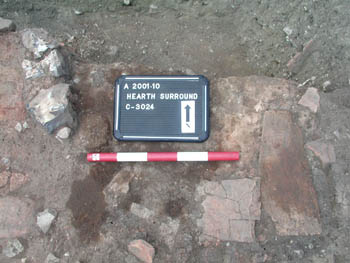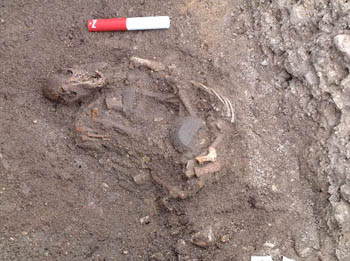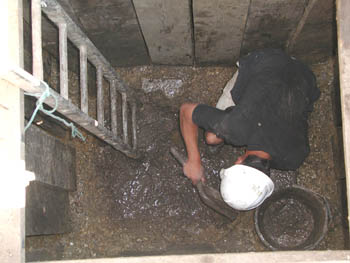| The 2001 Season Week 3 by Amanda Clarke |
| Day 15: 23rd July The blacksmith’s hearth associated with Building 9 has finally been fully excavated; all that remains is an area of underlying burnt soil. An occupation deposit to be associated with this hearth has been defined and recorded prior to excavation.
|

|

